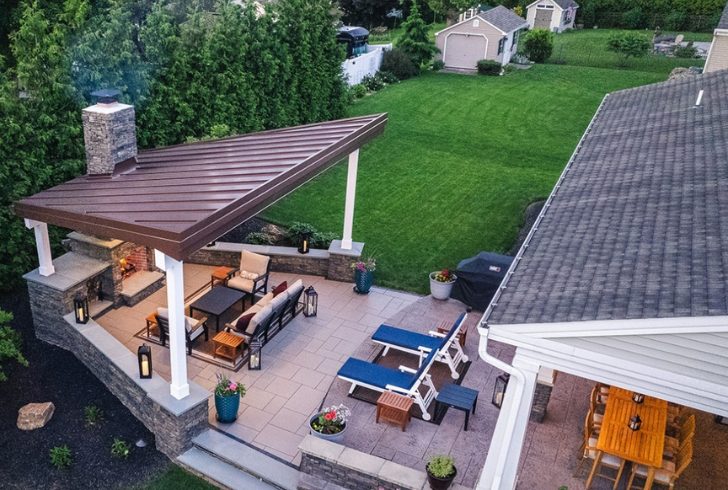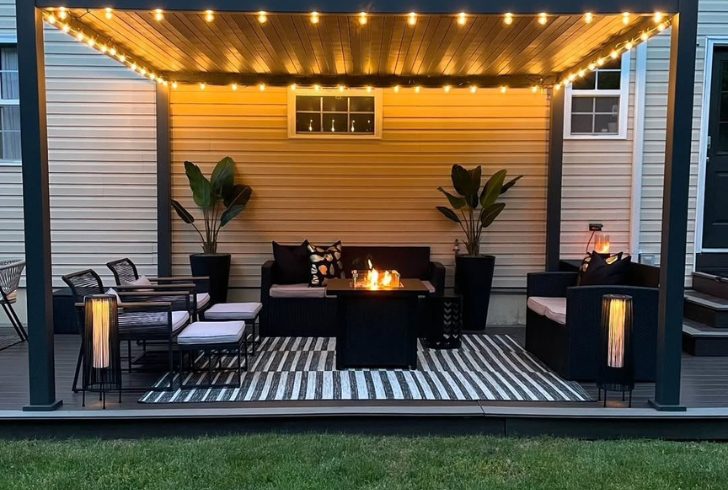When it comes to designing a patio, the goal is to create an inviting and functional space that enhances your home’s outdoor living experience. Whether you're imagining a cozy dining spot, a relaxing retreat, or an entertaining hub for family and friends, thoughtful planning is essential. The right design not only complements the aesthetic of your home but also maximizes the use of your outdoor space.
Let’s walk through the key considerations to keep in mind when designing a patio that suits both your needs and your environment.
1. Planning Your Patio Layout
The first step in designing a patio is to consider how you’ll use the space. Will it serve as a quiet retreat for reading and relaxation, or will it be a lively spot for outdoor dinners and socializing? Knowing the primary function of the patio will help guide the layout and design. Some patios might need extra seating space for entertaining, while others may only require a small table and a few chairs for intimate gatherings.

Instagram | apluslandscaping_ | Create a patio layout with kitchen access and relaxing spaces.
Key Considerations for Patio Layout:
1. Space Usage
Think about what activities you’ll be doing most on the patio, and plan accordingly. For example, a space for dining should be large enough to accommodate a table and chairs comfortably, while a relaxation area may require fewer pieces of furniture.
2. Flow and Movement
Make sure there’s enough space for movement around the patio. People should be able to walk easily between seating areas, the house, and other outdoor features without feeling cramped.
2. Choosing the Best Location
The location of your patio plays a significant role in how enjoyable it will be to use. It's essential to think about sunlight, shade, and how close you want the patio to be to your house. For a dining area, being close to the kitchen or back door can make serving food and drinks more convenient.
However, you’ll also want to consider the direction of sunlight. A patio facing west will capture the warm evening sun, making it ideal for evening meals or outdoor gatherings. If you prefer a cooler, shaded spot, position your patio under trees or next to a building for shelter from the heat.
3. Materials That Match Your Style
One of the most exciting parts of designing a patio is choosing the materials. The right material can elevate the style of your patio while ensuring durability in the long run. Here are some options you can consider:
1. Natural Stone - Materials like slate or limestone offer a timeless, classic look.
2. Pavers and Concrete Slabs - These are cost-effective and versatile, perfect for modern or minimalist designs.
3. Wood or Composite Decking - If you're aiming for a warm, natural feel, wood or composite materials might be the right choice for you.
Each material has its benefits and drawbacks, so it’s essential to consider factors like climate, maintenance, and budget. For example, while stone might be a beautiful and durable option, it can be more expensive and require more maintenance than concrete.
4. Consider the Size of Your Patio
The size of your patio depends on your garden's size, the space available, and how you plan to use the area. It’s crucial to avoid going too small or too large—too small, and you won’t be able to fit all your desired features; too large, and it might overwhelm your garden.
A good rule of thumb is to allocate around 20% of your total garden size to the patio. This allows enough space for seating, plants, and pathways while maintaining balance with the rest of your garden.
5. Designing Different Zones for Multi-Use Spaces
Zoning your patio into different areas can help you create a more functional and attractive space. For instance, you can designate one area for dining, another for lounging, and a separate corner for a fire pit or water feature. This strategy maximizes the utility of the space while giving it structure. Zoning also allows you to accommodate a variety of activities without feeling cramped.
Some tips for zoning:
1. Materials and Levels - Use different materials or add levels to visually separate different areas. For example, you could use stone pavers for the dining area and decking for the lounge section.
2. Furniture and Accessories - Define zones with furniture arrangements or decorative accessories like cushions, rugs, and plants.
Adding Comfort and Style with Accessories

Instagram | lea.home.decor | Enhance your patio's evening appeal with inviting outdoor lighting.
Once the basic design is in place, it’s time to add those finishing touches that make your patio truly unique and comfortable. Here are a few ideas:
1. Lighting - Install outdoor lighting to create a cozy ambiance for evening use. Solar lights, lanterns, or string lights can all add charm and warmth.
2. Plants - Integrate greenery into your design with potted plants or climbing vines. Plants help soften the hard edges of the patio and bring life to the space.
3. Heating - If you plan to use the patio in cooler weather, consider adding a patio heater or fire pit for warmth. These features can extend your outdoor living season and keep everyone comfortable.
Budgeting for Your Patio Project
Before you start building, it’s essential to establish a budget. The total cost of your patio will depend on factors such as the size, materials, and whether you hire a professional or handle the work yourself. While DIY projects can save money, keep in mind that professional installers have the experience to ensure a high-quality finish. Labor costs can range from $50 to $150 per hour, depending on your location and the complexity of the project.
Material costs also vary widely:
1. Concrete slabs are the most affordable option, ranging from $3 to $6 per square foot.
2. Natural stone or high-end materials like granite can cost $15 to $30 per square foot.
Adding features like built-in seating, fire pits, or lighting can increase the overall cost, so be sure to factor those in when setting your budget.
Designing a patio is a rewarding project that allows you to enhance your outdoor living space. By considering the location, size, materials, and functionality of your patio, you can create a space that suits your lifestyle and adds value to your home. Whether you're designing a peaceful retreat, a lively entertainment area, or a cozy dining spot, careful planning will help you bring your vision to life.



